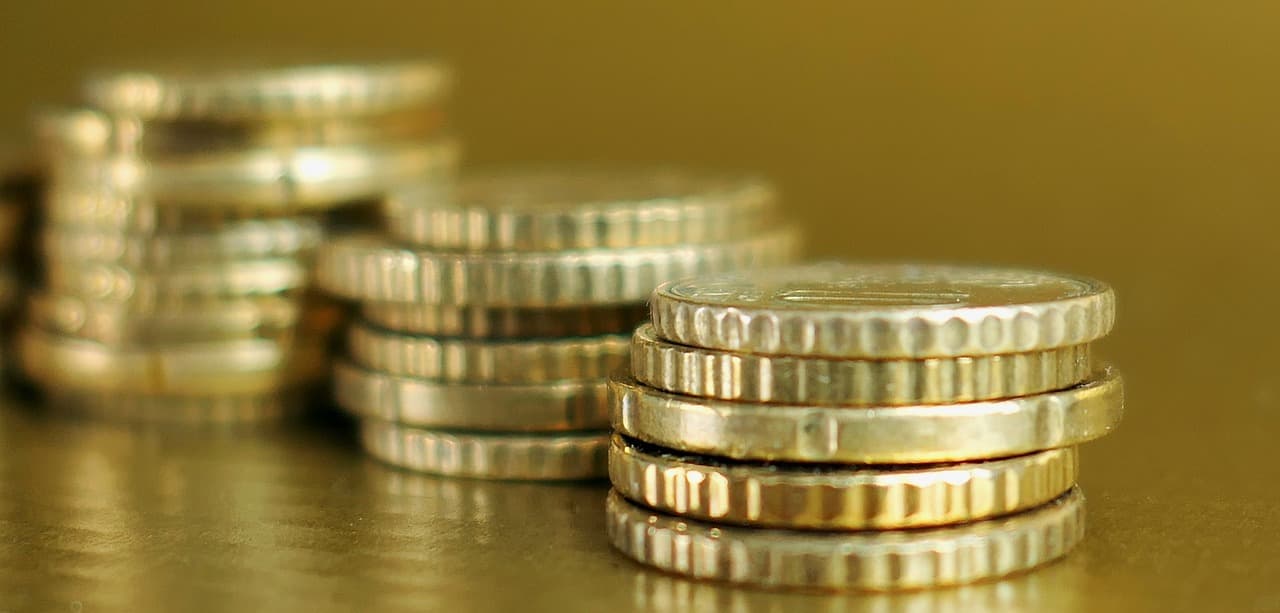
Coins are something we carry around every single day without so much as a second thought. From the pound you use to unlock your supermarket trolley, to the spare change you keep in the car for the occasional car park ticket machine; despite the majority of transactions happening digitally, most of us still keep some spare change on hand, just in case. Although they are still used so regularly, there are still a few common misconceptions around coins and their history. So, we turned to heritage British coin expert Peter Hutchison to answer some of the biggest questions and bust some of the biggest coin myths…
What is the difference between the coins in my wallet and collector editions such as Proof coins?
“The type of loose change we use day-to-day are known as circulation coins. They are only struck once, meaning the coin die – the metal stamp used to transfer the design onto the blank coin – is only pressed onto the metal blank on one occasion. Thousands of coins are minted per hour at high speed and high pressure, meaning the quality of the strike is as much about speed and efficiency as it is the quality of the coin itself.
“By contrast, creating collectors’ editions which are usually produced to what is called ‘proof’ quality requires an incredibly intricate process. Usually only around 50 coins can be produced per hour, the coin dies are hand finished and air-cleaned between each strike and the coins are usually passed through the minting process by hand, rather than on a conveyor belt. This allows the quality of the coin to be checked at each and every stage. These coins can be struck up to six times, and always in a dust-free environment. Unlike circulating coins, proof coins will have an unblemished mirror finish with every intricate detail visible”
I’ve got a commemorative coin – can I spend it in a shop?
“Commemorative coins belong to a class of coins known as Non-Circulating Legal Tender (NCLT). In short, commemorative coins are intended to be collectors’ editions and not intended to be used in circulation – so no, they can’t be spent in a shop.
“You may wonder, why bother making these coins if they aren’t going to circulate? Well, even though you can’t use them in the supermarket, as coins, they offer the buyer other benefits. Any coin produced as Legal Tender, whether circulating or not, must adhere to strict standards of weight, purity and fineness. If the coins carry the portrait of the British monarch they must pass through various approvals that ensure the theme and design is in good taste. So it’s about the guarantees you get when you buy a legal tender coin, even if it’s not going to circulate.”
Why aren’t all British coins round?
“If we look back to the ancient world, some of the very first coins ever minted were roughly circular and that is a tradition that has largely continued with currencies across the world. However, as we see with our own British currency, after the Decimal Currency Act was passed in May 1969, our coins started to look a little different.
“Take the 50p for example – this was the world’s first seven sided coin, designed to be easily distinguishable without having to look at it. That same principle applies to all of our coins, with their size, shape and thickness meaning that they are easily distinguishable from one another through touch alone.”
This year, to celebrate Prince George’s 10th birthday, the world’s first ten-sided sovereign coins ever have been released by Hattons of London. HRH Prince George is now second in line to the throne, and so these coins have been authorised to mark the 10th birthday of our future king. These new decagonal sovereigns create a series of sovereigns that stand apart from all others, a unique tribute to this popular young member of the Royal Family.
What is the history of the coin toss?
“The act of flipping a coin has actually been around for centuries with the first instance of it thought to be in Ancient Rome. Played as a game of chance known as ‘Heads or Ships’, one player would be assigned ‘heads’ – referring to the side of the coin featuring a portrait of the emperor – and the other ‘ships’ – the side of the coin with the ship motif always lost.
“Throughout history though, no matter its name or reasoning, it has continued to be used for the same thing. To settle a dispute, make a decision or end a rivalry and it’s something that’s still used today at major sporting events.”
Why do coins have ridges on the edges?
“Until the late 1600’s, coinage in Britain was produced by hammering the design onto a blank and the edges were very flat and irregular in shape. Unscrupulous people could shave off portions of these gold and silver coins selling off the shavings, then still pass the coin off as its full value.
“Machines were introduced by King Charles II after the Restoration of the Monarchy in 1660 to replace the old hammering technique and these machines meant the edges could be made more rounded, and have ridges on them. This made it obvious if anyone had tampered with the edge (or shaved it) and so the coin could be rejected. A few decades later, in 1698 Sir Isaac Newton – not only a celebrated physicist, but also Master of the Royal Mint for three decades – oversaw the withdrawal and melting down of all ‘hammered’ coins, replacing them with counterfeit-resistant machine struck coins.”


